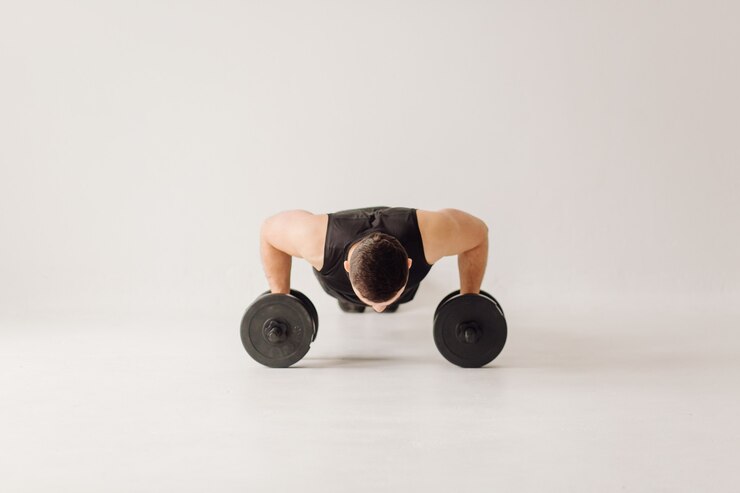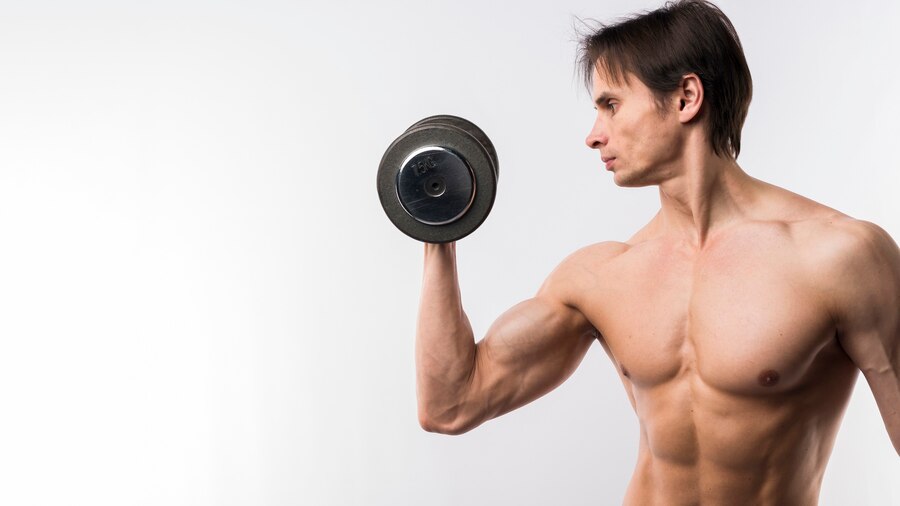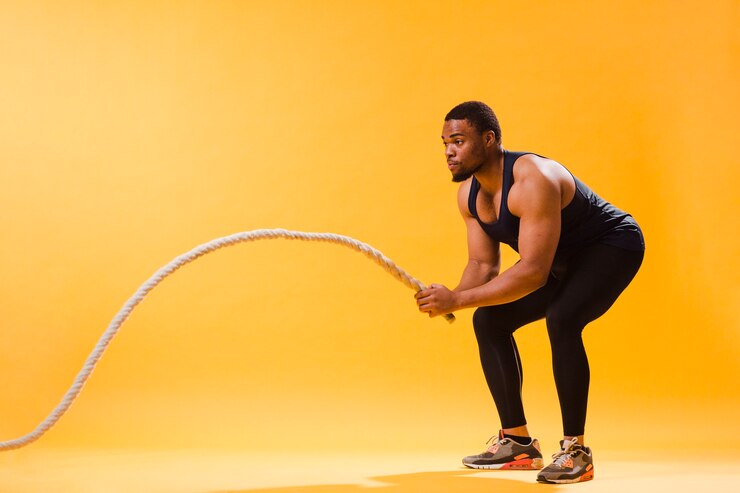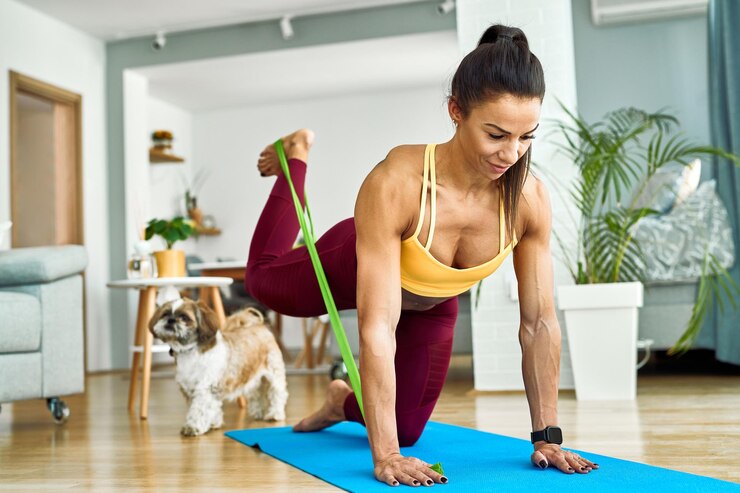As a fitness enthusiast with 25 years of experience exploring the gym jungle, I’ve learned that relying solely on cables can sometimes limit your workout options. And when it comes to crafting a sculpted chest, cable flies often take center stage. But fear not fellow gym rats! The world of dumbbell alternatives is vast and ready to ignite your pecs without ever touching a cable machine. So, ditch the pulleys and grab some bells, because we’re about to embark on a chest-sculpting adventure powered by dumbbells!
I. Targeting Every Angle: Mastering the Dumbbell Fly Variations.
Flat Bench Dumbbell Fly – The Classic Chest-Builder.
Remember that iconic image of Arnold Schwarzenegger, chest puffed like a majestic rooster mid-crow? That, my friends, is the flat bench dumbbell fly in all its glory. This exercise hits your mid-pec fibers like a laser, building impressive definition and strength.
The beauty lies in its simplicity – grab your dumbbells, lie flat on a bench, and spread those wings (arms, that is). Just remember, the magic happens at the bottom of the movement, so control that descent and feel the pecs ignite! I wrote another article about >>>> Ditch the Machine, Fly Free: Top Alternatives to Cable Flyes that you need to read to learn more about different alternatives.
Pros:
- Simple setup, perfect for beginners.
- Isolates and targets primary pec fibers.
- A controlled range of motion allows for focused activation.
Cons:
- Limited pec tension at the bottom of the movement.
- High weight can strain shoulders.
Incline Dumbbell Fly – Reaching for New Heights.
If you crave that coveted upper pec definition, the incline dumbbell fly is your new best friend. Tilting the bench upwards shifts the focus to your upper pecs, making them sing soprano with every controlled rep.
Not only does this variation sculpt those mountain peaks, but it also reduces stress on your shoulders, allowing you to embrace heavier weights. Just be mindful of the bench angle – too steep, and you’ll end up singing alto in the shoulder strain choir.

Pros:
- Isolates and strengthens upper pecs for greater definition.
- Reduces stress on shoulders compared to flat bench fly.
- Allows for heavier weights, ideal for advanced lifters.
Cons:
- Less mid-pec involvement compared to flat bench fly.
- Awkward setup for certain bench angles.
Decline Dumbbell Fly – Unearthing Hidden Gems.
Think of the decline dumbbell fly as the Indiana Jones of chest exercises, unearthing those often-neglected lower pec fibers. This variation challenges your core and stability while sculpting a complete, well-rounded chest.
But like venturing into a temple filled with booby traps, the decline bench setup adds a layer of complexity. Proceed with caution, prioritize proper form, and watch those precious lower pecs blossom like hidden treasures.
Pros:
- Targets neglected lower pecs for a complete chest workout.
- Engages core and stability muscles for added benefits.
Cons:
- Requires a decline bench (not always readily available).
- Increased risk of shoulder impingement if form is compromised.
Single-Arm Dumbbell Fly – Conquering Imbalances and Boosting Stability.
The single-arm dumbbell fly throws a curveball into the mix, forcing each pec to work independently. This not only addresses any pesky imbalances that might be lurking in the shadows but also strengthens your core and obliques like a boss.
However, this one-armed warrior demands respect – lighter weights are your allies, and perfect form is your shield. Embrace the challenge, and watch your chest transform into a testament to unilateral training prowess.

Pros:
- Isolates each pec individually for balanced development.
- Strengthens core and obliques for improved stability.
Cons:
- Challenging balance, especially for beginners.
- Requires lighter weights compared to bilateral exercises.
- Less overall pec activation compared to double-arm variations.
Now, with this arsenal of dumbbell fly variations at your disposal, you’re ready to sculpt the chest of your dreams. But remember, the journey doesn’t end here. Stay tuned for Part II, where we’ll explore creative alternatives that push the boundaries of your chest workout beyond the bench!
II. Beyond the Bench: Unleashing Your Creative Pec Power with Dumbbells.
Remember that feeling of being trapped in a workout rut, desperately seeking novelty to ignite your training fire? Well, ditch the bench press limitations and unlock a universe of dumbbell fly possibilities, because it’s time to paint your chest portrait with unconventional strokes!
Floor Fly – Embracing the Humble Ground for Deeper Pec Activation.
Ever heard of the “Superman chest”? No, it’s not Clark Kent in his ripped civilian attire. It’s the result of embracing the humble floor fly. Lying face down with dumbbells in your hands, you’ll tap into deeper pec fibers thanks to the increased range of motion. Plus, your shoulders get a break from the usual overhead stress. Just be mindful of your lower back – engage your core and maintain a neutral spine to avoid any unwanted visitors from the land of pain.
Pros:
- Enhances pec stretch and activates deeper fibers.
- Reduces stress on shoulders compared to regular flyes.
- Can be done anywhere, no fancy equipment is needed.
Cons:
- Requires more floor space than traditional bench exercises.
- Less control at the bottom of the movement.
- Awkward setup for some individuals.
Push-up Plus – Supercharging Your Bodyweight with a Dumbbell Twist.
Who says bodyweight workouts can’t be explosive? The push-up plus takes your classic push-up to the next level by adding a dumbbell fly at the top. This powerhouse combo combines isolation and compound movements, maximizing your chest activation and leaving your pecs begging for mercy (in the best way possible, of course). Just remember, progress gradually with weight selection, and listen to your body – perfect form is your mantra, not pushing through pain.

Pros:
- Combines compound push-up with isolation fly for maximum pec engagement.
- Utilizes bodyweight, ideal for home workouts or travel.
- Eliminates the need for weight plates and bulky equipment.
Cons:
- Limited weight options compared to pure dumbbell flyes.
- Challenging for beginners, especially with added weight.
- May strain shoulders at high intensity if a form is compromised.
Resistance Band Fly – The Portable Pec-Sculpting Partner.
Craving a workout companion that fits in your pocket? Look no further than the resistance band fly. These versatile, adaptable wonders offer varying resistances, allowing you to tailor your workout to your specific needs. Plus, they’re perfect for home workouts or adding spice to your travel routine. Just be aware that the resistance feels different compared to weights, and finding anchor points can be a creative exercise in itself.
Pros:
- Portable and adaptable, ideal for travel or home workouts.
- Adjustable resistance allows for progressive overload.
- Eliminates weight plate changes and saves space.
Cons:
- Less stable resistance compared to weights, requiring more focus on form.
- Requires anchor points, which might limit exercise options.
- Can feel like an unnatural movement for some individuals.
Remember, these are just a taste of the dumbbell fly multiverse. Embrace the spirit of experimentation, mix and match variations, and listen to your body. With dedication and creativity, you’ll sculpt a chest worthy of a Greek god, all without ever touching a cable machine. Stay tuned for Part III, where we’ll dive deep into pro tips for maximizing your dumbbell fly effectiveness and unlocking the full potential of these chest-sculpting gems!
III. Pro-Tips: Igniting Your Pecs with Dumbbell Fly Mastery.
Conquering the dumbbell fly variations is one thing, but unleashing their true pec-sculpting potential takes finesse. So, grab your notebook and sharpen your pencils, because we’re about to delve into the secret sauce of maximizing your dumbbell fly effectiveness.
Mind-Muscle Connection: The Key to Pec Activation Nirvana.
Muscles don’t respond to numbers on a dumbbell, they respond to intention. That’s where the mind-muscle connection comes in. Focus on feeling your pecs working throughout the entire movement, not just on heaving the weight. Visualize the fibers contracting and squeezing with each rep, making your pecs the star of the show. Forget about impressing onlookers with brute force, and instead, impress yourself with the precision of your mind-muscle control.

Controlled Tempo: Slow and Steady Wins the Pec Race.
Remember the tortoise and the hare? Channel your inner tortoise with the dumbbell fly. Lower the weights slowly, savoring the stretch in your pecs. Don’t let momentum become your crutch. Feel the tension throughout the entire range of motion, especially at the bottom where the pecs are most vulnerable.
Pause at the peak squeeze, let those fibers scream (metaphorically, of course), and then repeat with controlled precision. Slow and steady might seem boring, but trust me, your pecs will thank you for the controlled burn.
Neutral Spine: Your Back’s Best Friend.
Think of your spine as the foundation of your chest workout. Arching your back might feel like you’re cheating to lift more weight, but it’s a recipe for disaster. Keep your core engaged, maintain a neutral spine throughout the movement, and let your pecs do the talking. This protects your lower back, prevents unwanted injuries, and ensures that all the hard work goes straight to building a sculpted chest, not a compromised spine.
Grip Matters: Finding the Perfect Handshake for Your Pecs.
Don’t underestimate the power of a good handshake… for your dumbbells, that is. Angling your hands slightly inwards during the fly activates your inner pec fibers more effectively. Think of it as giving your pecs a friendly hug with each rep. Avoid palms facing forward, as this puts unwanted stress on your shoulders. Experiment with different grip angles to find the sweet spot where your pecs sing and your shoulders stay happy.
Listen to Your Body: The Wisdom of Your Inner Workout Guru.
Pain is not a badge of honor in the gym. It’s your body’s way of screaming “STOP!” So, listen closely. If you feel any discomfort, especially in your shoulders, ease up the weight, adjust your form, or take a break. Remember, progress over perfection. Pushing through pain can lead to injuries that sideline you for weeks, whereas respecting your body’s limits paves the way for consistent growth and sculpted pecs in the long run.
With these pro-tips in your arsenal, you’re equipped to transform your dumbbell flyes into pec-sculpting masterpieces. Remember, it’s all about intention, control, and respect for your body. Now, go forth and conquer those dumbbells, fellow gym warriors! And stay tuned for Part IV, where we’ll answer your burning questions about dumbbell flyes and set you on the path to chest-sculpting domination!
IV. Frequently Asked Questions: Unveiling the Mystery of Dumbbell Flyes.
Fear not, fellow chest enthusiasts! The journey to sculpted pecs can be riddled with doubts and uncertainties. But fear not! Let’s unravel the mysteries surrounding dumbbell flyes and leave no question unanswered. Buckle up, grab your dumbbells (figuratively, of course), and prepare to dive into the FAQ abyss!
1. Dumbbell Fly vs. Cable Crossover: Which is Better?
Both cable crossovers and dumbbell flyes offer unique advantages. Cables provide consistent tension throughout the entire range of motion, making them ideal for beginners. Dumbbells, on the other hand, challenge your stability and core engagement, leading to more complete muscle activation.
Ultimately, the “better” choice depends on your goals and experience level. For beginners, cables offer a gentler learning curve. For veterans seeking added core and stability work, dumbbells reign supreme. Remember, variety is key! Mix and match both exercises to keep your pecs guessing and maximize results.
2. Can I Replace All Cable Flyes with Dumbbell Flyes?
While dumbbell flyes are a fantastic chest-sculpting tool, they’re not a perfect cable crossover replacement. The fixed trajectory of dumbbell flyes limits the angle of pec activation compared to cables, which offer multi-directional movement. To ensure a well-rounded chest workout, incorporate both exercises or explore other dumbbell variations like incline or decline flyes. Remember, diversity is your friend!
3. What Other Dumbbell Exercises Can I Add for a Complete Chest Workout?
Dumbbell flyes are just one piece of the chest-sculpting puzzle. To build a complete, powerful chest, consider adding compound exercises like dumbbell bench presses, push-ups, and incline dumbbell presses. Don’t neglect the lower pecs! Include decline bench press variations or floor flyes in your routine. Remember, balance is key! Target all pec fibers from different angles for a truly sculpted and functional chest.
4. How Can I Prevent Shoulder Injuries When Doing Dumbbell Flyes?
Shoulder safety is paramount! Maintain proper form throughout the movement. Avoid arching your back, keep your core engaged, and choose a weight that allows you to maintain control. Listen to your body, stop if you feel any pain, and don’t go beyond your shoulder’s comfortable range of motion. Consider warming up with lighter weights and light rotator cuff exercises before diving into heavy flyes. Remember, prevention is better than cure!
5. Are There Any Dumbbell Fly Variations for Specific Pec Weaknesses?
Absolutely! For underdeveloped upper pecs, focus on incline dumbbell flyes and overhead presses. For neglected lower pecs, incorporate decline bench press variations and floor flyes. Remember, targeted variations are your allies! Address specific weaknesses to achieve a balanced and impressive chest physique.
So, there you have it, fellow chest warriors! With these FAQs answered, you’re equipped to navigate the world of dumbbell flyes with confidence and sculpt the pecs of your dreams. Remember, consistency, proper form, and listening to your body are your guiding principles. Now go forth, unleash the power of dumbbells, and conquer your chest workout goals!
I am commitment to crafting compelling narratives and delivering insightful content continues to inspire and inform readers across various platforms. Explore her articles on AlternativesZone.com and FactAfterFact.com to experience a rich tapestry of knowledge and discovery. Here I Analyze and Test the products and services together with my team before we recommend them to our users. Nice Reading Here!











